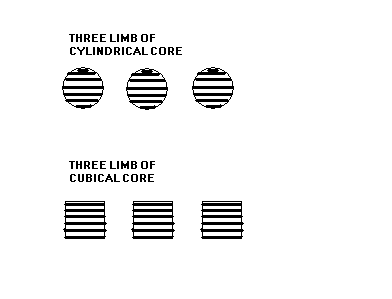- This topic has 8 replies, 1 voice, and was last updated 2 years, 11 months ago by .
-
Topic
-
A power transformer manufacturer decided to decrease their production budget by reduction of material amount used in transformer construction.
In mentioned manufacturer country, the transformer core material is an expensive portion of power transformer because it shall be supplied by foreign companies. Therefore they began it by saving material used in core construction.
Generally, the power transformer core plates are cut in rectangular form with different sizes (same length, different width) to shape a cylindrical core. In the mentioned company because of traditional product procedure, this method caused a lot of material loss due to plate cutting.

Therefore they decided to use cubical shape instead of cylindrical core; they thought the rectangular path surface of magnetic flux is important and circular shape of core cross section couldn't cause any technical benefit. Finally they made power transformers with cubical core with less material because they didn't have any waste cut plates. All electrical tests consist: no load and on load electrical power losses, transformer impedance voltage, percentage of transformer magnetizing current and their harmonic effects were done on new transformers and everything was very well.
However in practice, the new power transformers used in actual power systems couldn't withstand against mechanical stress of sever short circuits.What is your opinion? How core shape selection influenced the transformer withstand against short circuit current?
- You must be logged in to reply to this topic.
